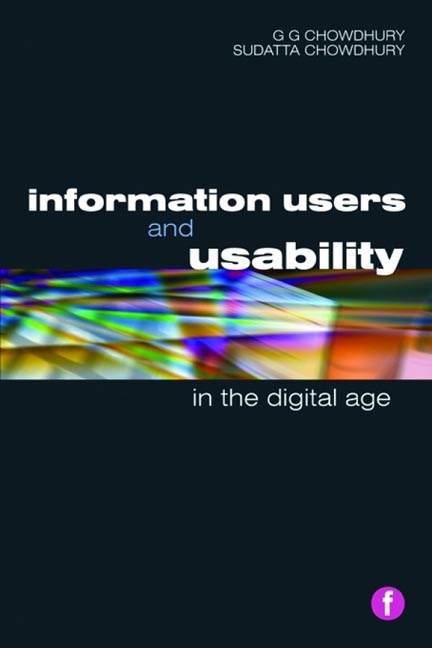Book contents
- Frontmatter
- Contents
- Preface
- Figures and tables
- 1 Introduction
- 2 Information needs and user studies
- 3 Human information behaviour studies and models
- 4 Usability study basics
- 5 Usability study participants
- 6 Usability data analysis
- 7 Web usability
- 8 The usability of digital libraries
- 9 The digital divide, digital natives and usability
- 10 Issues and trends in usability research
- Index
5 - Usability study participants
Published online by Cambridge University Press: 09 June 2018
- Frontmatter
- Contents
- Preface
- Figures and tables
- 1 Introduction
- 2 Information needs and user studies
- 3 Human information behaviour studies and models
- 4 Usability study basics
- 5 Usability study participants
- 6 Usability data analysis
- 7 Web usability
- 8 The usability of digital libraries
- 9 The digital divide, digital natives and usability
- 10 Issues and trends in usability research
- Index
Summary
Introduction
As discussed in Chapter 4, the success of a usability study depends significantly on the selection of appropriate study participants. Sometimes it is not easy to identify who the actual and potential users of an information product or service are, and this makes the job of selecting participants for a usability study even more difficult. However, combining the most suitable groups of study participants and the most appropriate data collection methods can produce the best results in a usability study. This chapter discusses some basic issues related to the selection of participants for usability studies of information products and services. It also discusses various techniques for user sampling and the ethical requirements associated with the selection of study participants and usability studies in general.
Selection of study participants
An information product or service is designed to meet the information requirements of a group of users. Depending on the nature and content of the specific information product or service, sometimes these users can be very specific, for example, a group of scientists, professionals or researchers, or members of the general public. Nonetheless, the overall goal of a usability study is to assess how far the given information product or service achieves its stated objectives of meeting the information needs of the target users. Hence knowing who the target users are of an information product or service is the first step in conducting a usability study.
Creating a user profile
Before designing an information product or service, it is important to identify the potential users, record their information behaviour, and find out the tasks or activities for which they would need to use the information product or service. This information is used to create a user profile, which forms the basis of the design. This information can also be used at a later stage of the product lifecycle in order to conduct usability testing.
Usually a user profile is created at the very early stages of a product development. This is dictated by the business and goals of the organization that is developing an information product or service, the nature of the product, the specific objective and goals of the product, the target users, and the specific tasks or activities for which they would need the new or modified information product or service.
- Type
- Chapter
- Information
- Information Users and Usability in the Digital Age , pp. 109 - 122Publisher: FacetPrint publication year: 2011



